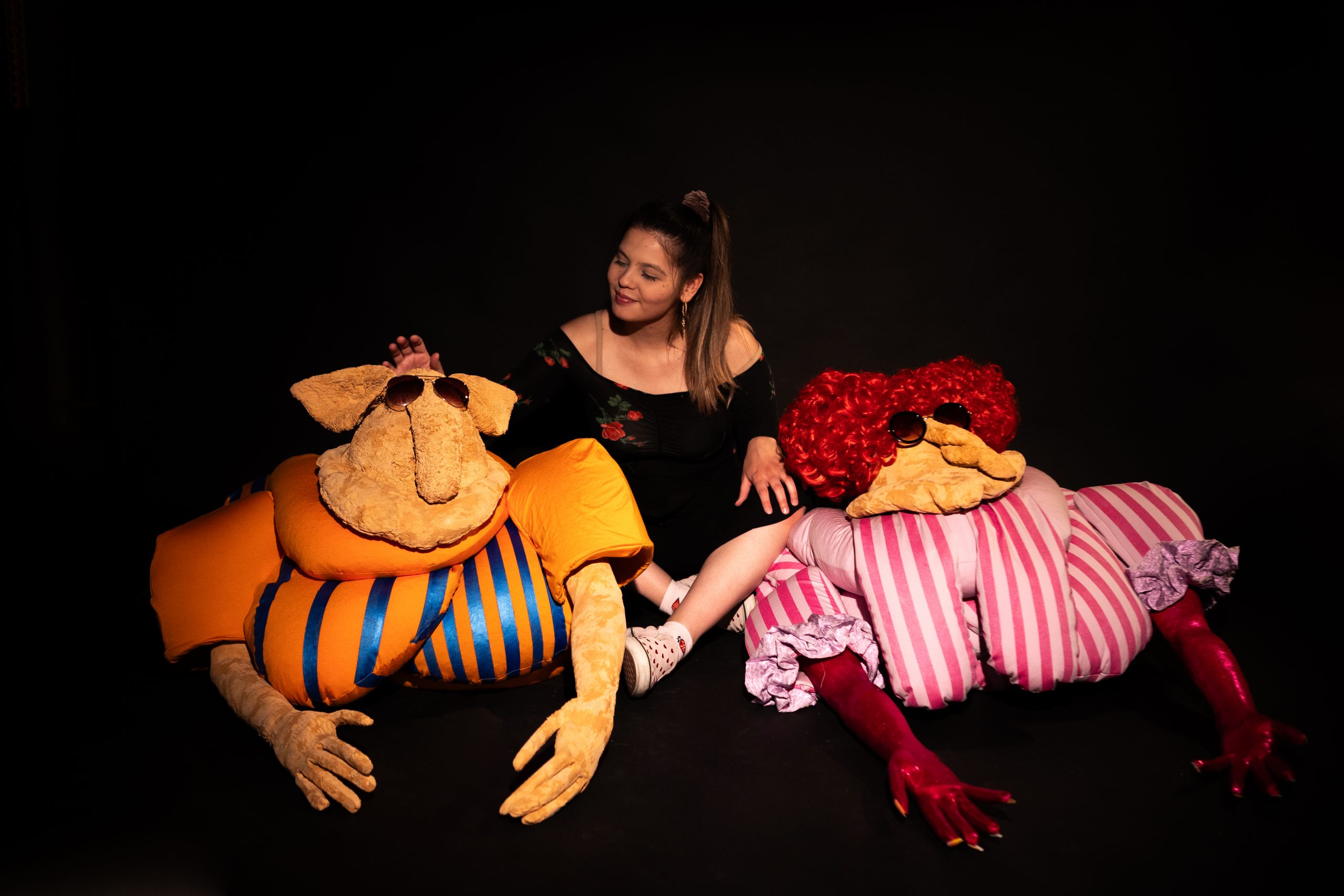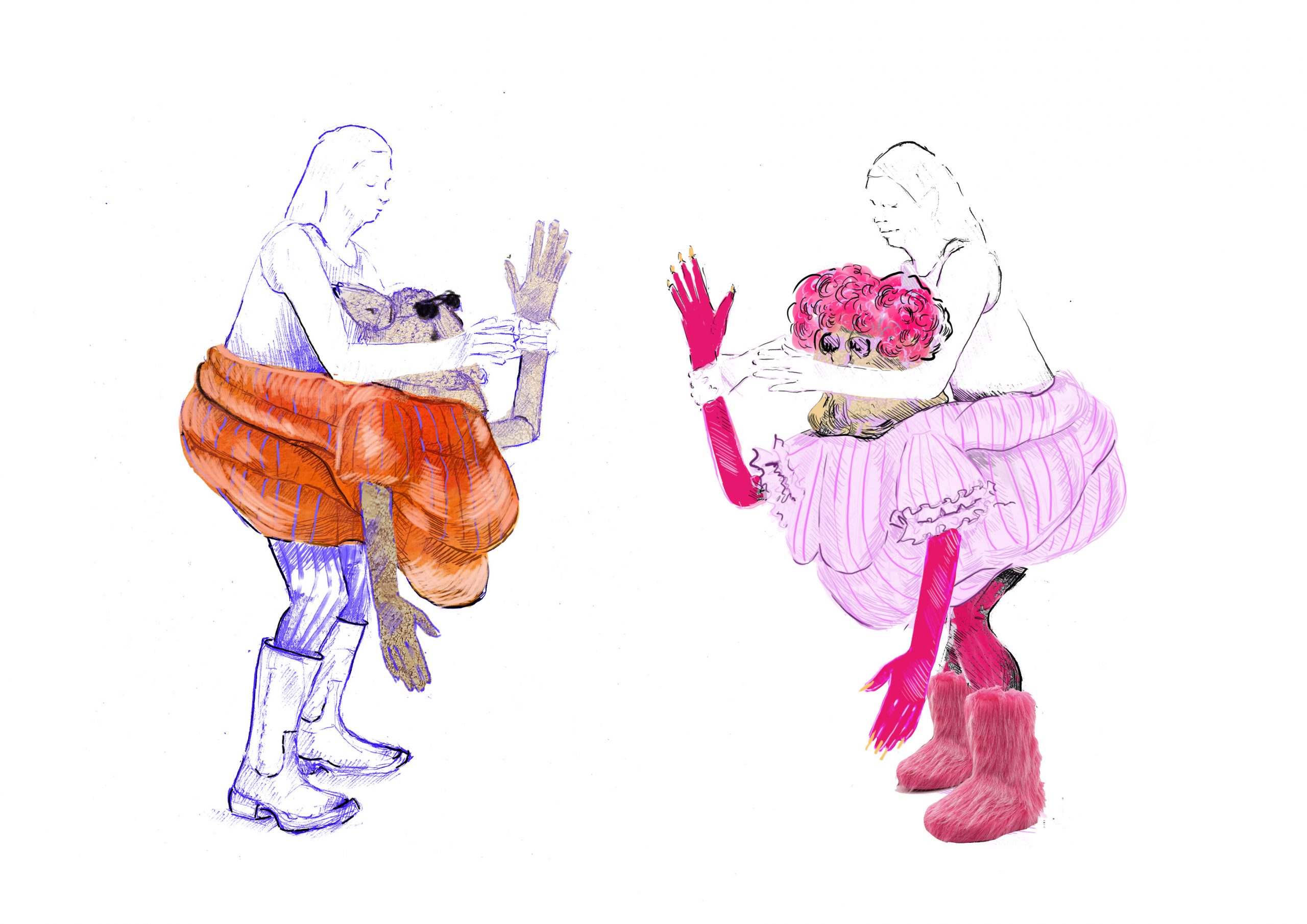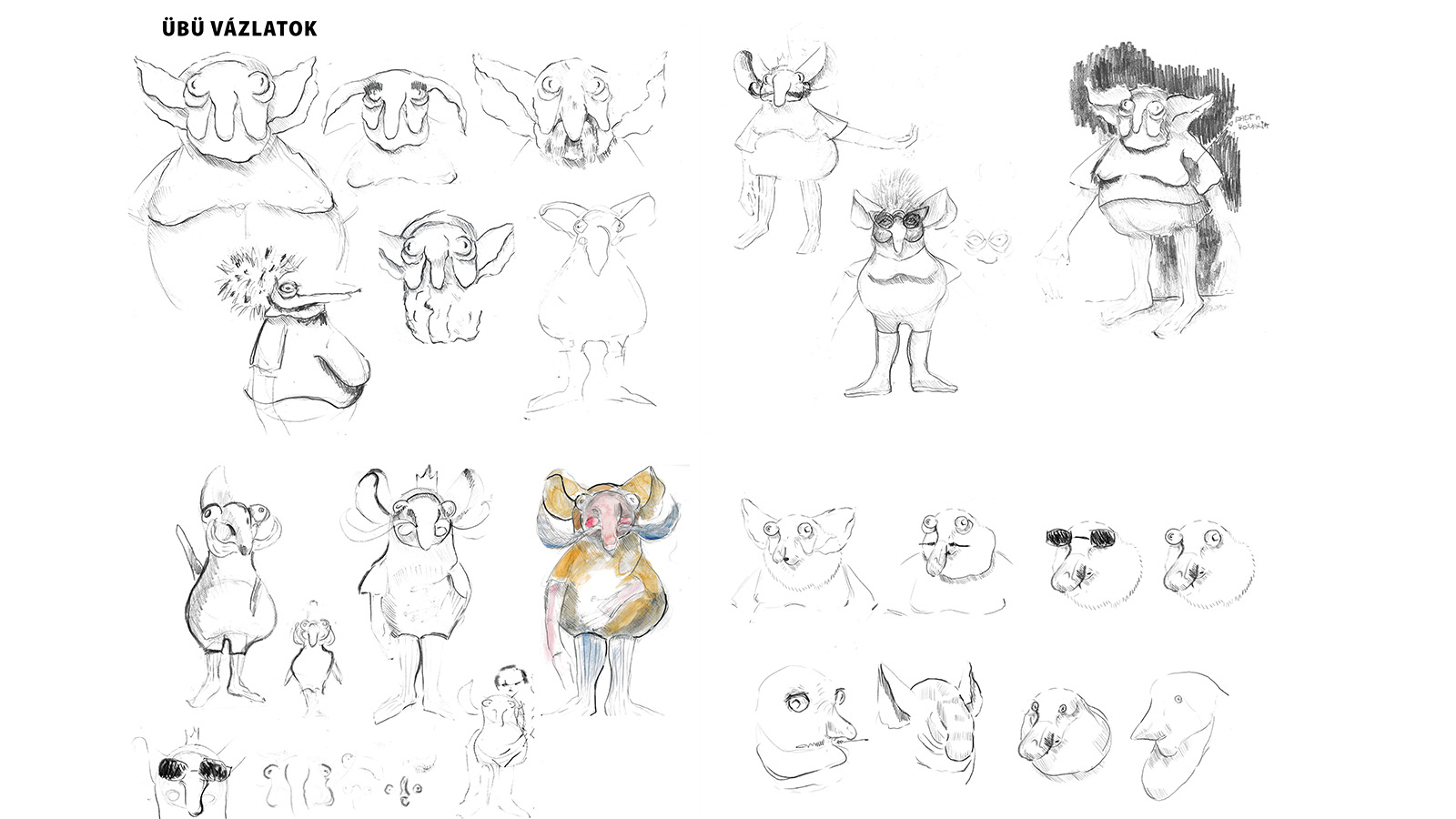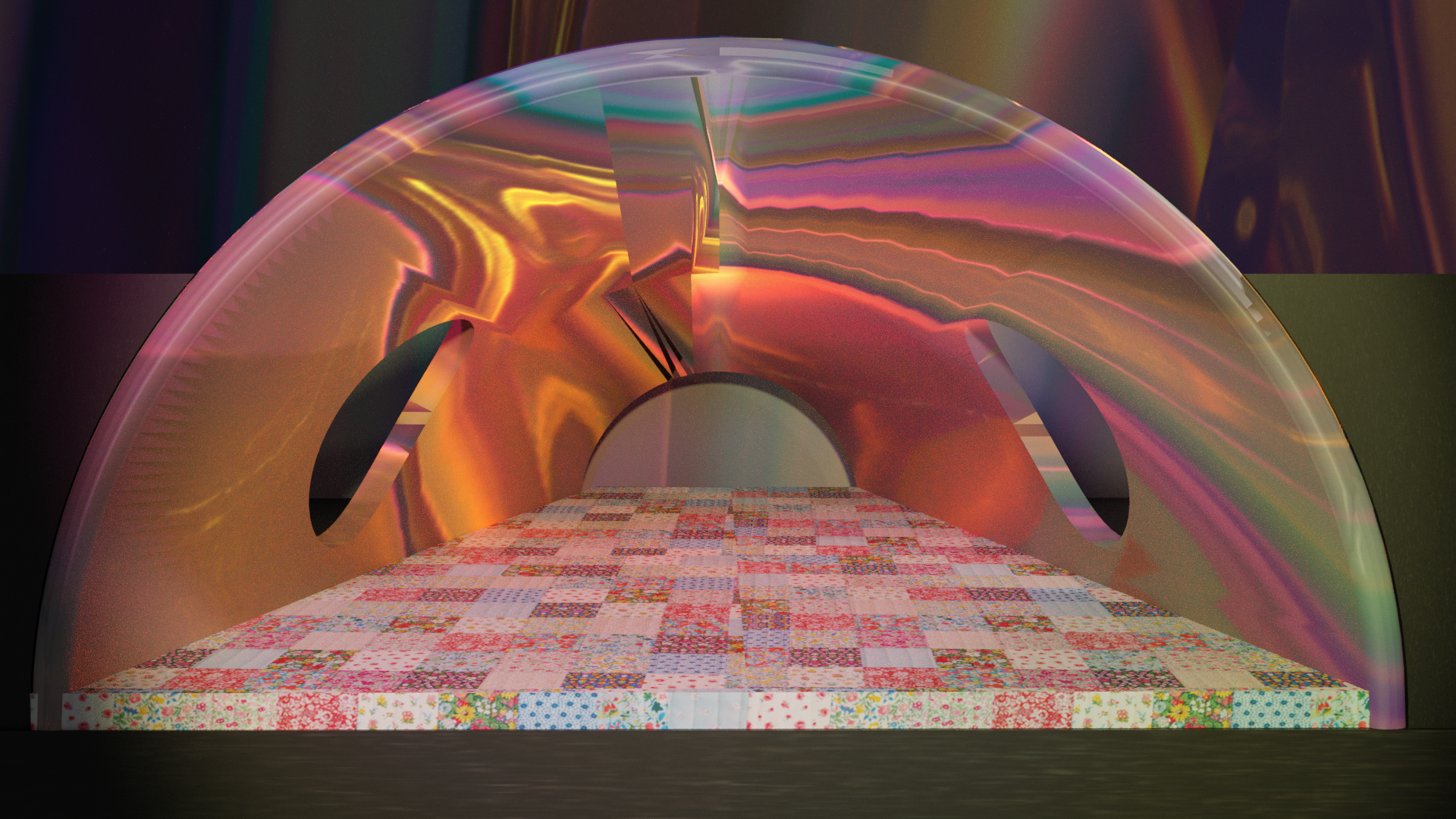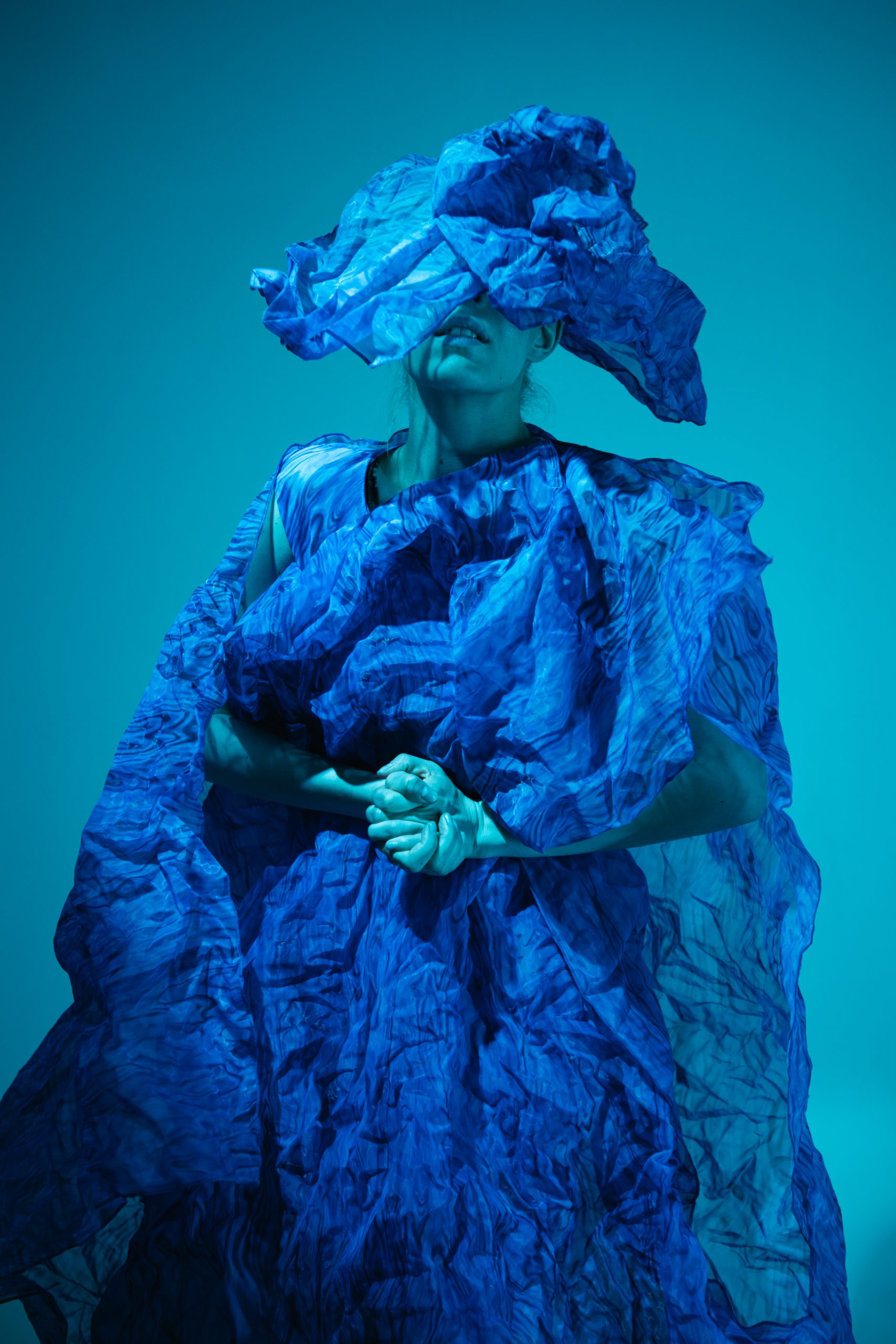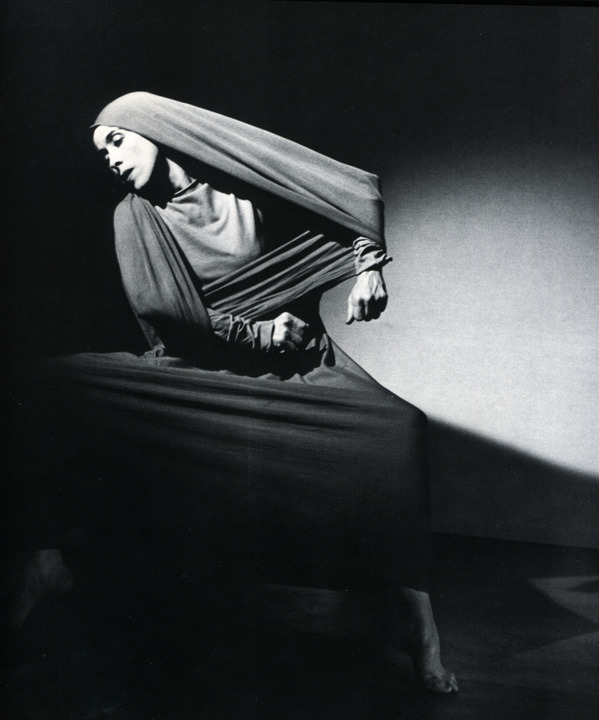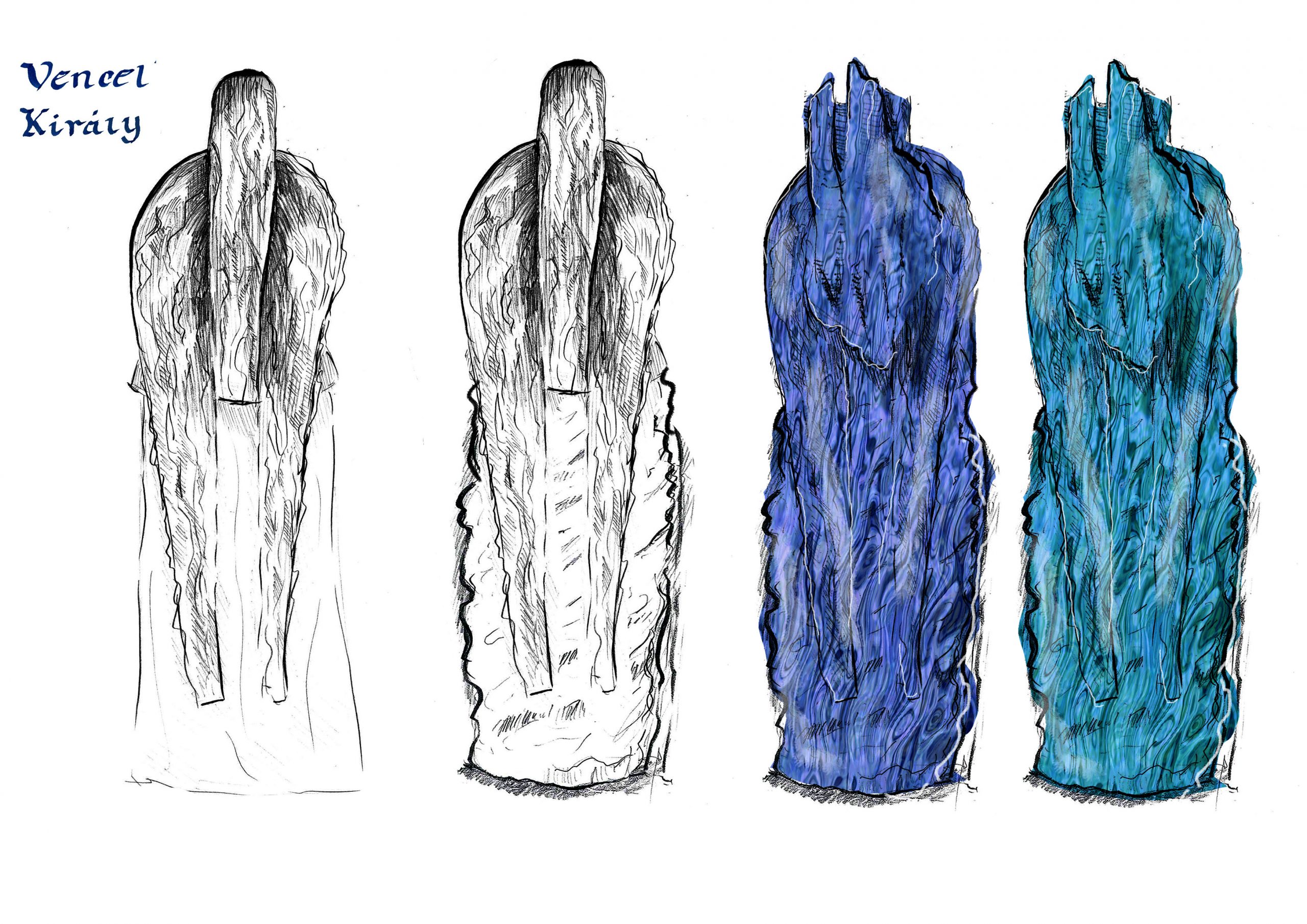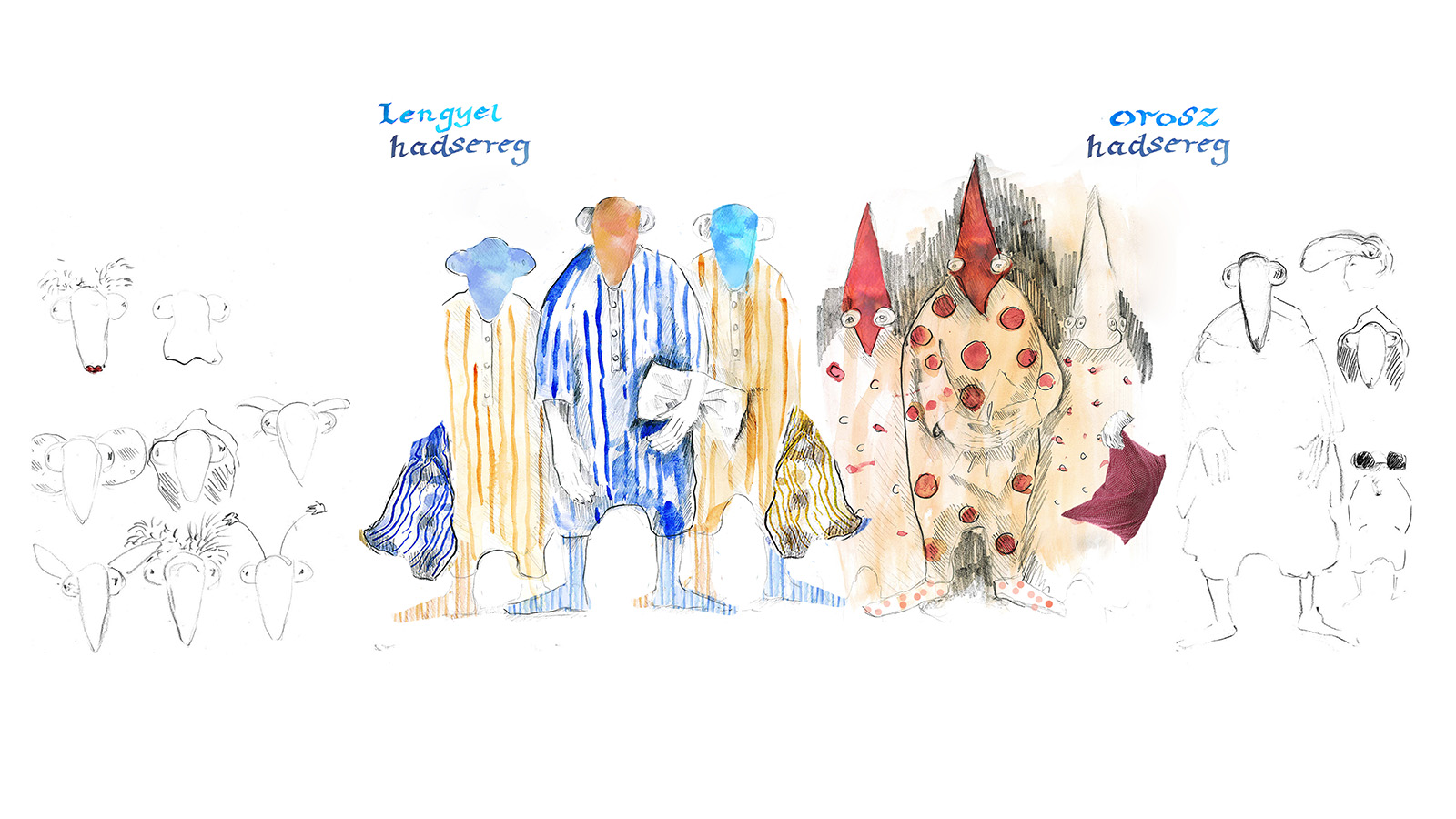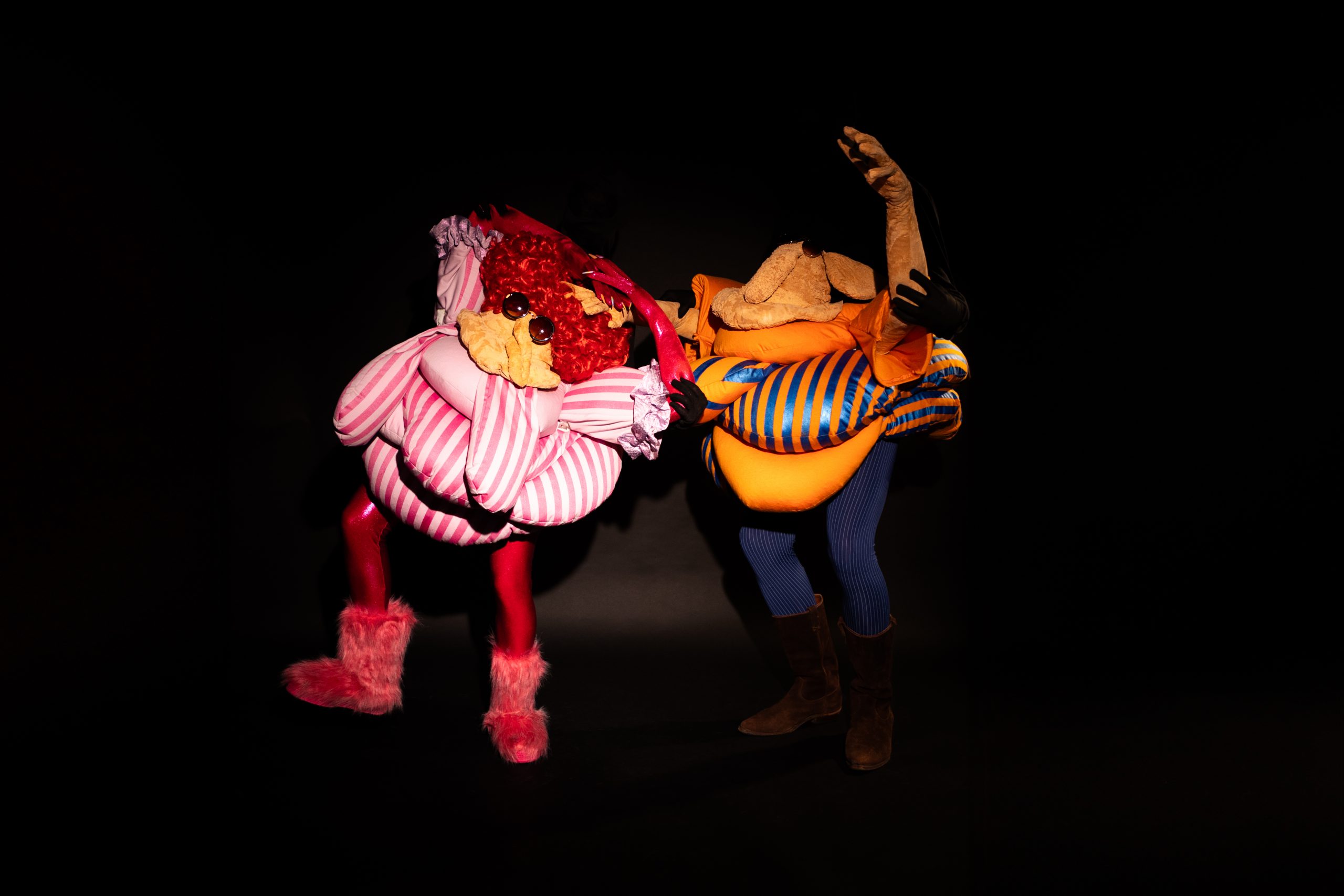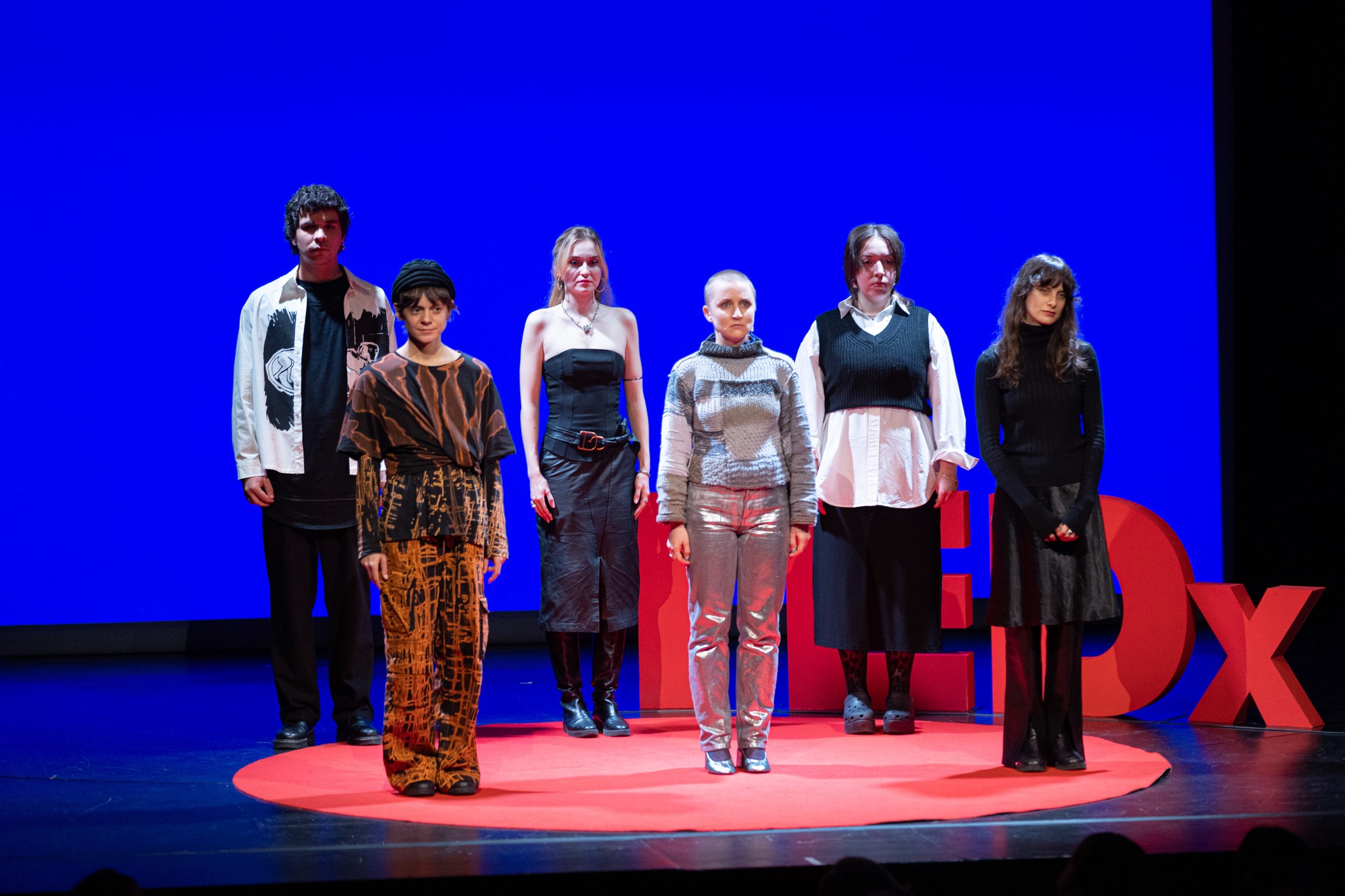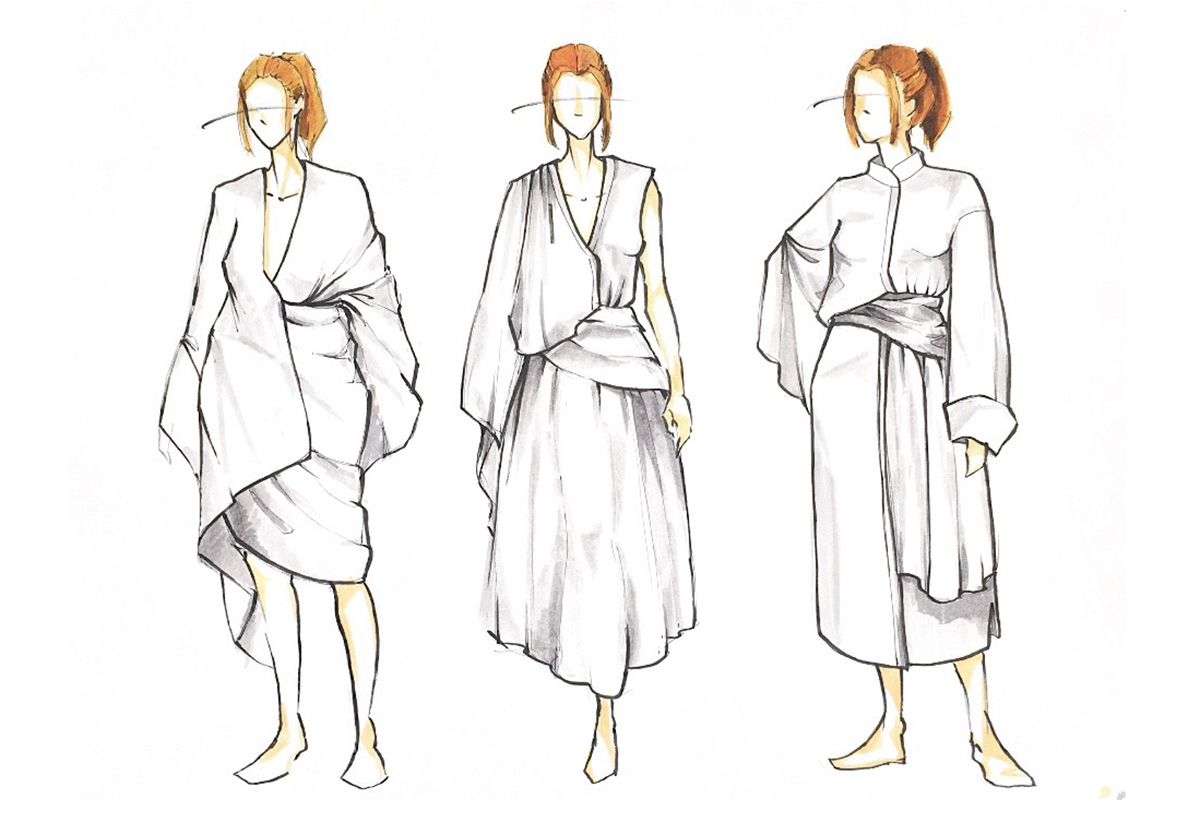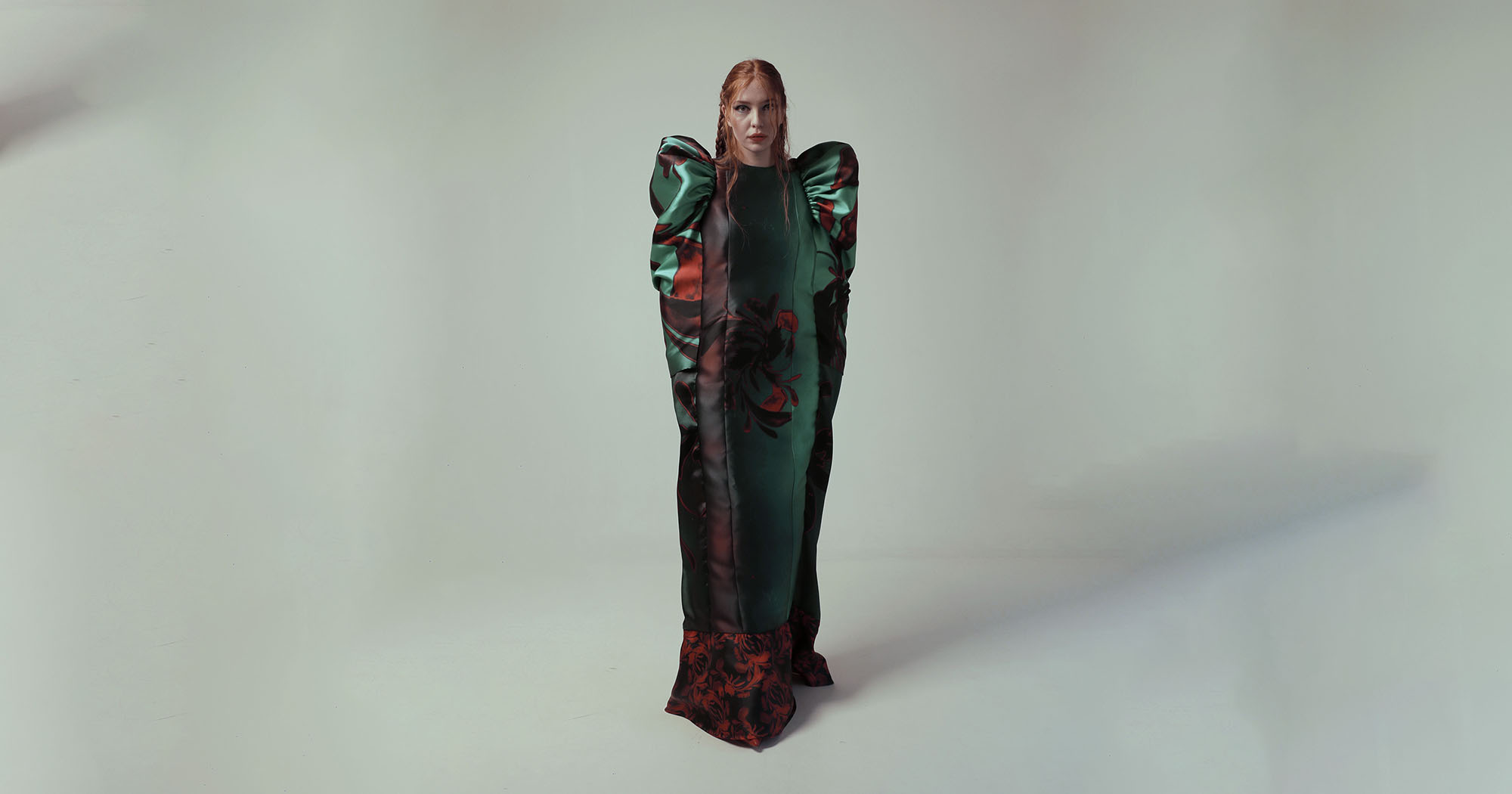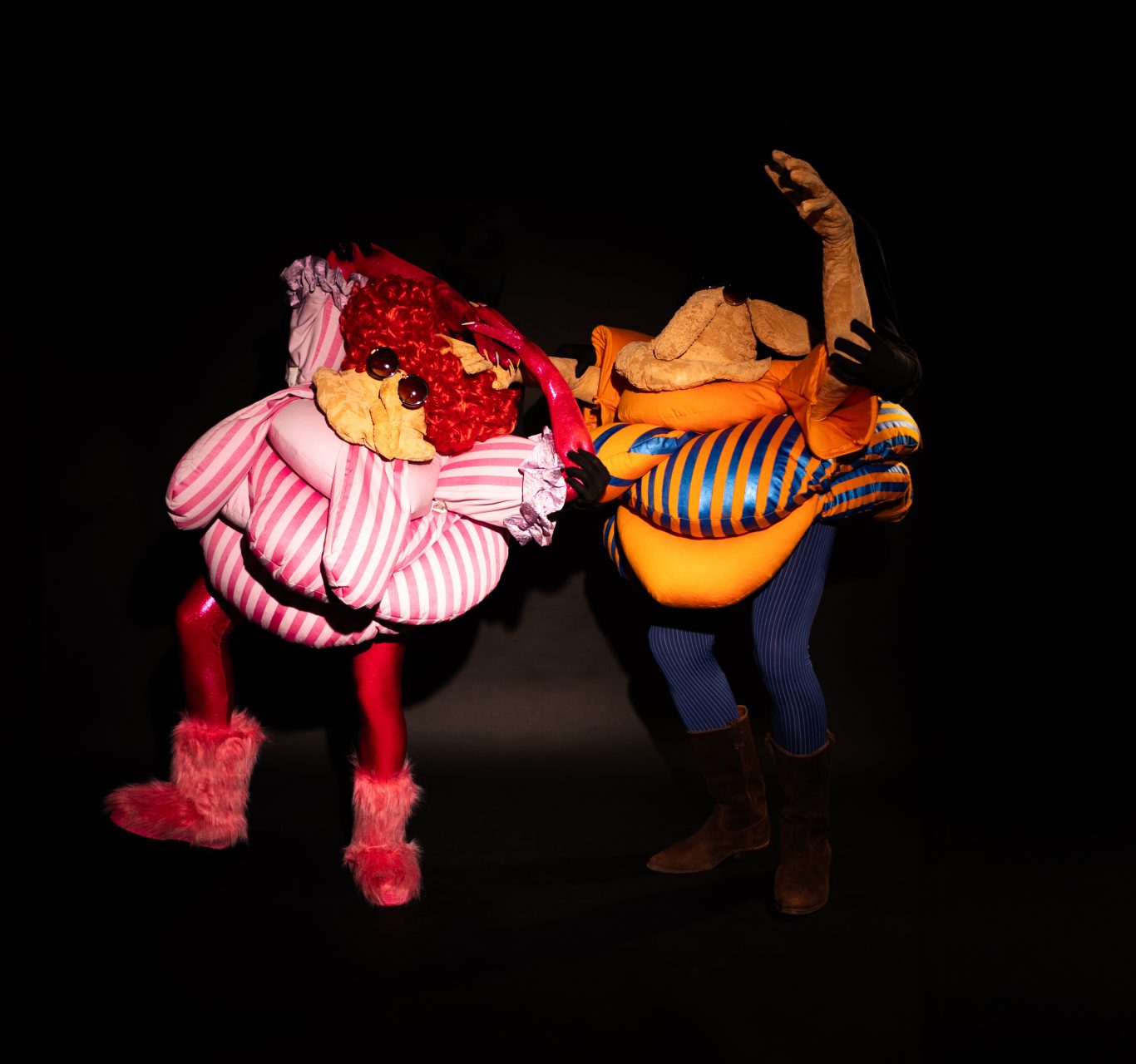
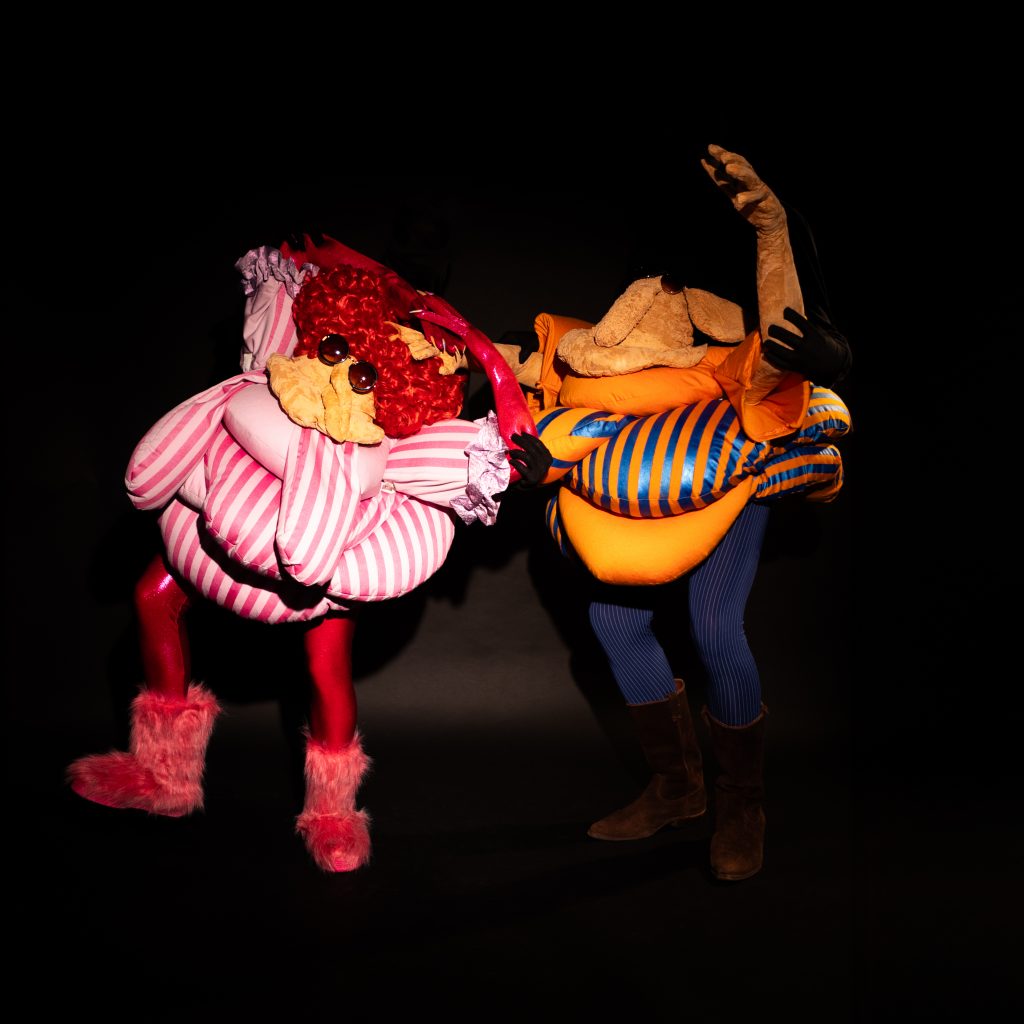
The absurdity of our Ubu-isms – Boglárka Bakos’ puppet-costumes
Anxious small-mindedness; power-hungry selfishness; a common person blinded by overcompensating, thinking that the first touch of power will make them great. From the Parliament to workplaces and schools, we can encounter petty, authoritarian figures who like to abuse their positions. It was in the latter setting that a student prank caricaturing a teacher inspired French playwright Alfred Jarry’s masterpiece, Ubu Roi. Although the initial performance of this grotesque farce about Papa Ubu, a man intoxicated by the power he seizes through a coup, ended in scandal in the late 19th century, the disastrous “Ubu-isms” of the next hundred years have only reinforced the story’s simultaneously alarming and absurd nature. Shaped by history, the eternal story has inspired numerous theatrical and visual artworks, with costume designer Boglárka Bakos offering a fresh interpretation for puppet adaptation.
A holographic wall arches over a floor reminiscent of a child’s bedspread pattern, and the funnel-like space cut in half draws us immediately into the unique dreamworld designed by Boglárka. The set design evokes Papa Ubu’s simplistic tunnel vision and peculiar psyche, amplifying the nearly surreal characters of Jarry’s drama, just as it does through the experimental puppet-costumes of the characters.
‘I’ve always sought magic in the of world of the theatre. I find the possibility of metamorphosis, transformation the most exciting aspect of stage performances, which is perhaps why the genre of puppetry is close to my heart – because anything can happen there. I’ve noticed that communication through objects often evokes the strongest emotions in me. This inner drive led me to blend puppetry and costume design in my master work.’
But how do puppetry and costume design intersect? In her research, Boglárka points out an interesting difference between the two: while a costume designer creates outfits for a character, a puppet designer creates the character itself. The need to reconcile these two roles first arose when puppeteers first stepped out from behind the screen onto the stage. With the puppeteer practically merging with the puppet they wear, the lines between puppet and costume are blurred.
Boglárka consciously employed this effect when creating the body-puppets of Papa and Mama Ubu, making the puppeteers essentially dissolve in the grotesqueness and baseness of humanity while wearing them. ‘I’ve often heard that a person’s face and appearance can reflect their inner world and personality. When designing the characters of Mama and Papa Ubu, my goal was to make their inner vulgarity visible on the outside as well.’ To achieve this, Boglárka combined various animal photos to create their facial features, and instead of clothing, she crafted rolling folds of fat as their attire. Although the finished body-puppets may appear heavy at first glance, the foam heads and fat rolls filled with polystyrene balls ensure that they are light and easy to wear for the puppeteers.
The body-puppets of Papa and Mama Ubu, resembling collapsing stacks of pancakes, exaggerate the parodistic nature of the play – in contrast, the character designs for King Wenceslas and Queen Rosemonde, who fall victim to the machinations of the Ubus, seem to symbolise the tragedy within the story. Boglárka’s puppet-costumes reflect the hierarchy of the characters, with Wenceslas and Rosemonde portrayed less grotesquely compared to the couple Ubu. Body masks are closer to traditional costumes, and lack limb-extending prosthetics yet remain puppet-like, fully encasing the actor and appearing almost as separate entities on the stage. Boglárka cites Martha Graham’s 1930 dance performance Lamentation as an example, where the tube-like fabric worn and animated by the artist essentially becomes an independent character telling its own story.
The dominant blue colour of the royal couple’s body masks, along with the patterns evoking turbulent waters, symbolise weakness tragically coupled with well-intentioned naivety. The Russian and Polish soldiers in the story are in a similarly vulnerable situation. For these military characters, Boglárka designed forehead masks – a type of puppet-costume that requires the puppeteer to adopt a bowed, hunched posture, resembling a bow. The distorted posture of these puppet designs reflects their subservience and submission to, and internal conflict caused by Papa Ubu.
‘I’ve never used so many techniques and materials to create a single piece before. I knew it would be difficult, but I found the topic so exciting that I dove right in. I often felt a great deal of uncertainty during the process because I had no prior experience in creating such complex objects. […] All in all, I really enjoyed designing and creating the puppets. The greatest satisfaction came from seeing the body-puppets come to life during the photoshoot. Seeing Ubu Mama dance fills me with immense joy.’
// /
Boglárka Bakos graduated from the Costume Design specialisation of the Fashion and Textile Design MA of Moholy-Nagy University of Art and Design in 2024. Her masterwork was completed with Edit Szűcs as her supervisor and Eszter Kocsis as her master work consultant.
Photos: Diána Komróczki
